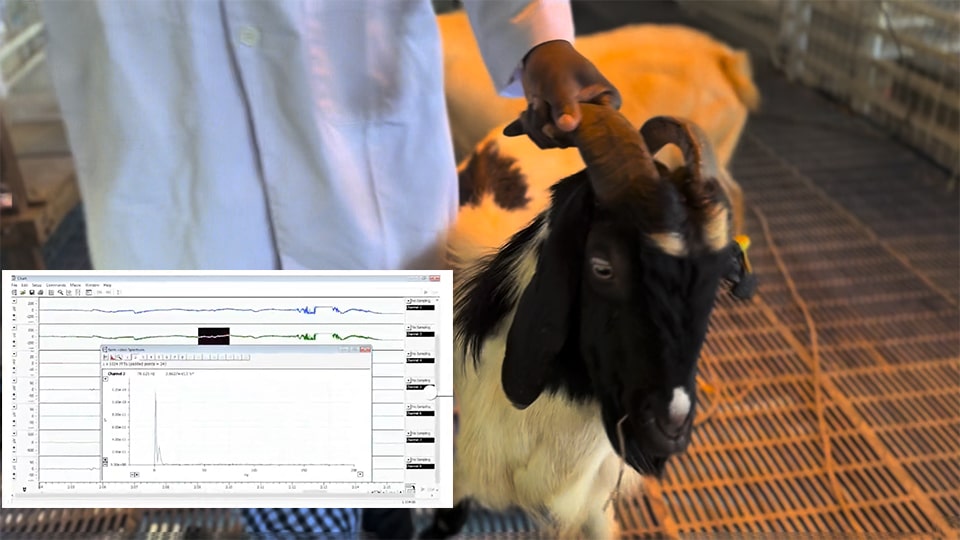SERDANG, Malaysia—How can science help ensure that meat production is both halal and humane? Can it measure the pain that animals experience during slaughter?
That's exactly what a team of Malaysian researchers set out to explore in an initiative that brought brain-wave technology to the world of halal slaughter.
Led by Prof. Dr. Awis Qurni Sazili, Director of the Halal Products Research Institute at Universiti Putra Malaysia (UPM), the project assessed whether electroencephalography (EEG)—a medical tool used to read brain activity—can be used on livestock to monitor their stress and pain levels during slaughter. Undertaken from 2023 to 2025, the work was funded by the Southeast Asian Regional Center for Graduate Study and Research in Agriculture (SEARCA) through its Grants for Research towards Agricultural Innovative Solutions (GRAINS).
 Brain wave patterns reveal whether animals experience stress or remain calm during handling and offer a new tool for ensuring animal welfare in the halal meat industry.
Brain wave patterns reveal whether animals experience stress or remain calm during handling and offer a new tool for ensuring animal welfare in the halal meat industry.
Awis reported that animal stress raises ethical concerns and can degrade meat quality, resulting in tougher meat. He pointed out that the adoption of best practices in animal handling is key to maintaining Malaysia's leadership in halal standards and certification.
"Consumers are increasingly aware of animal welfare, and meat that is certified humane and halal can gain a market advantage in the region's growing halal market," he said.
The project's goal was to use EEG data to ensure that animals experience minimal pain, aligning with both Islamic principles and modern animal welfare standards. The project team worked with eight goat farms across three states to assess their current pre-slaughter practices. With herd sizes ranging from fewer than 20 to over 50 goats, the farms showed varying adoption levels of pre-slaughter stunning—highlighting the need for clear guidelines and farmer education.
The EEG readings clearly showed differences in brain activity between animals handled according to best-practice halal procedures and those that were not. Unprofessional handling, such as pulling the animal's legs, generated a significant increase in frequency of the EEG wave patterns, which is an indicator of stress. Drawing on these findings, the project team produced an instructional video promoting proper handling and slaughter techniques grounded in both Islamic principles and scientific evidence.
In May 2025, the video became the key educational tool of a workshop that brought together researchers, veterinarians, farm personnel, state religious organizations, and smallholder farmers. Participants discussed the concept of using EEG to monitor animal well-being. The workshop and field observations acknowledged the "farm to fork" approach, which addresses every step of the livestock production chain from animal rearing to transport, slaughter, post-slaughter, and marketing.
Farmers were intrigued by how real-time brain-wave monitoring by EEG could objectively indicate if an animal was in pain or had become insensible. The technology provided a way to validate whether their slaughter methods were truly humane or needed adjustment. EEG readings also confirmed that stunning induces unconsciousness, thereby preventing unnecessary pain. Furthermore, lower stress levels were linked to improved meat hygiene outcomes.
Beyond Malaysia, the project aims to strengthen meat safety assurance, quality compliance, as well as animal welfare and health assessment. ASEAN countries that support and invest in the halal food industry and in halal community socioeconomic enterprises will benefit from EEG as an innovative tool to standardize halal slaughtering practices.